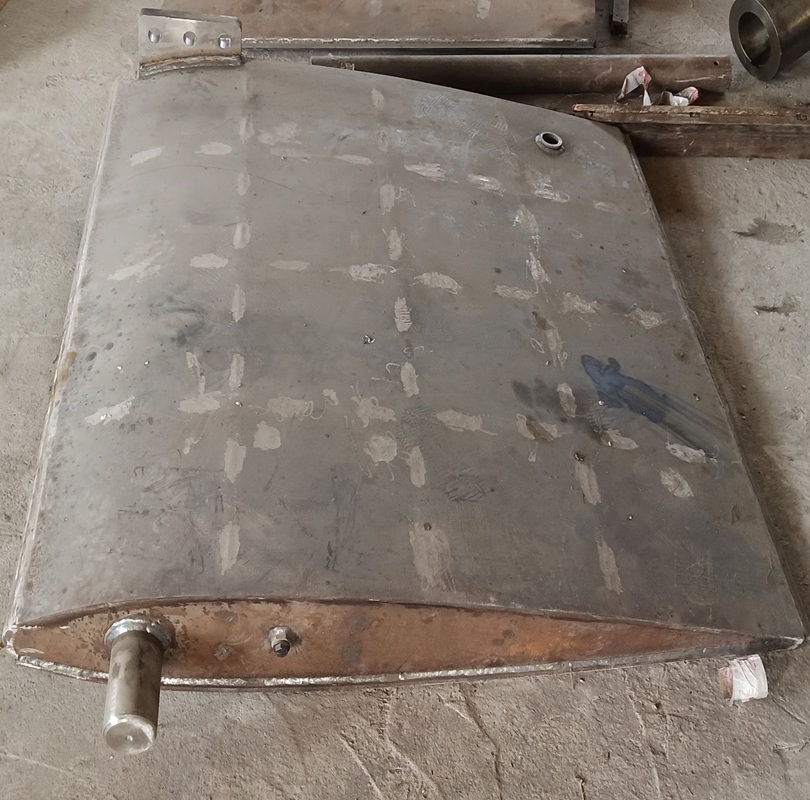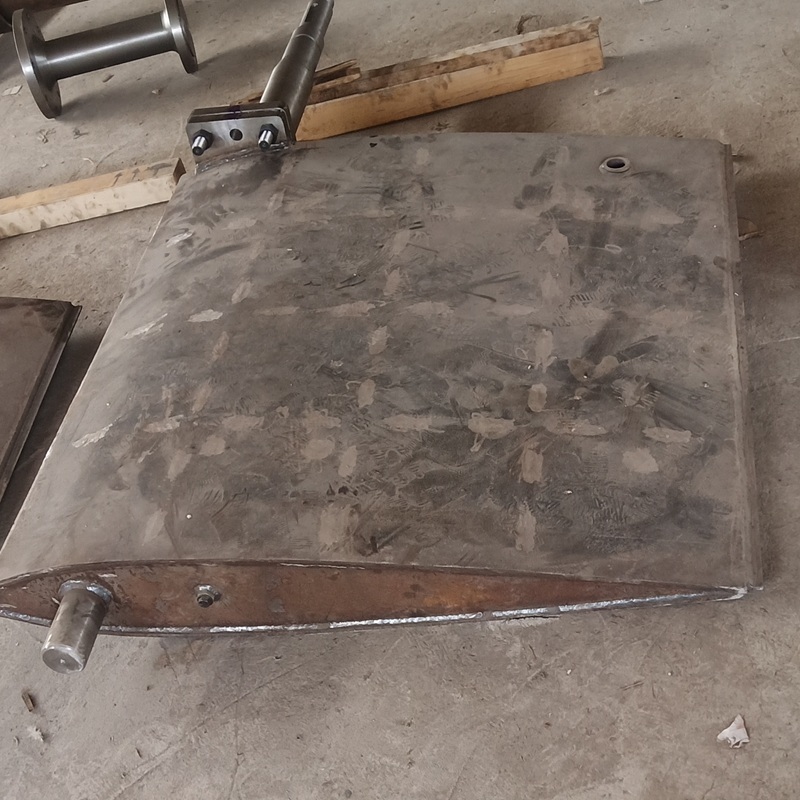The Evolution of Rudder Blade Technology in Modern Shipping
Release Time:
Jun 06,2025
The Evolution of Rudder Blade Technology in Modern Shipping Table of Contents 1. Introduction to Rudder Blade Technology 2. Historical Development of Rudder Designs 3. Modern Innovations in Rudder Blade Technology 4. Materials and Design Considerations 5. The Impact on Maritime Efficiency and Safety 6. Environmental Sustainability and Rudder Technology
The Evolution of Rudder Blade Technology in Modern Shipping
Table of Contents
- 1. Introduction to Rudder Blade Technology
- 2. Historical Development of Rudder Designs
- 3. Modern Innovations in Rudder Blade Technology
- 4. Materials and Design Considerations
- 5. The Impact on Maritime Efficiency and Safety
- 6. Environmental Sustainability and Rudder Technology
- 7. Future Directions in Rudder Blade Technology
- 8. Conclusion
- 9. Frequently Asked Questions
1. Introduction to Rudder Blade Technology
The rudder blade is a pivotal component in maritime navigation, playing a crucial role in steering and maneuvering vessels. Over the years, rudder blade technology has evolved significantly, adapting to the needs of modern shipping. This article delves into the fascinating journey of rudder blade technology, highlighting key innovations and their impact on the industry.
2. Historical Development of Rudder Designs
The history of rudder designs can be traced back thousands of years. Early vessels utilized simple, fixed rudders, which were not very efficient in terms of maneuverability and control. As maritime trade grew, so did the need for more sophisticated steering mechanisms.
The Transition from Fixed to Movable Rudders
In the Middle Ages, the introduction of movable rudders marked a significant turning point. These rudders, mounted on the stern, allowed for better handling and control of larger ships. The design was further refined during the Age of Exploration, enabling explorers to navigate treacherous waters with greater precision.
Advancements in the 19th Century
The Industrial Revolution brought about a new wave of innovation in shipbuilding and rudder technology. The advent of steam-powered vessels required enhanced rudder designs to cope with increased speeds and larger sizes. Engineers began experimenting with various shapes and sizes to optimize performance.
3. Modern Innovations in Rudder Blade Technology
Today, rudder blade technology has reached remarkable heights. Various advancements have emerged, focusing on enhancing performance, reducing drag, and improving overall efficiency.
Computational Fluid Dynamics (CFD)
One of the most significant innovations has been the use of Computational Fluid Dynamics (CFD) in rudder design. CFD allows engineers to simulate fluid flow around a rudder, identifying optimal shapes and angles. This technology has led to the development of highly efficient rudder designs that minimize resistance and maximize thrust.
Fins and Special Designs
Modern rudders often incorporate additional features such as fins and specialized designs. These enhancements help to increase lift and improve maneuverability, particularly at low speeds. The integration of these elements results in better handling characteristics and overall vessel performance.
4. Materials and Design Considerations
Selecting the right materials is crucial in the construction of rudder blades. The choice of material affects factors such as weight, durability, and resistance to corrosion.
Composite Materials
Composite materials have gained popularity in recent years due to their lightweight and corrosion-resistant properties. These materials often allow for more intricate designs while maintaining strength and performance.
Weight Distribution and Center of Gravity
Designers must also consider weight distribution and the center of gravity when developing rudder blades. A well-balanced rudder contributes to improved stability and responsiveness, which is essential for modern shipping operations.
5. The Impact on Maritime Efficiency and Safety
The evolution of rudder blade technology has had a profound impact on maritime efficiency and safety. Enhanced designs lead to better fuel economy, ultimately contributing to cost savings for shipping companies.
Fuel Efficiency
Improved rudder designs reduce drag, leading to lower fuel consumption. As a result, vessels can travel longer distances with less fuel, reducing operational costs and environmental impact.
Enhanced Maneuverability and Safety
Modern rudder technology also enhances a vessel's maneuverability, particularly in congested ports and narrow waterways. Improved steering capabilities reduce the likelihood of accidents, making shipping safer for crews and cargo.
6. Environmental Sustainability and Rudder Technology
As the maritime industry faces increasing pressure to become more environmentally friendly, the evolution of rudder technology has played a crucial role in promoting sustainability.
Reducing Carbon Emissions
With a focus on reducing carbon emissions, the latest rudder designs contribute to lower fuel consumption and, consequently, less pollution. This aligns with global efforts to combat climate change and adopt greener shipping practices.
Innovations in Eco-Friendly Materials
The use of eco-friendly materials in rudder construction further supports sustainability initiatives. These advancements ensure that vessels are built to last while minimizing their environmental footprint.
7. Future Directions in Rudder Blade Technology
The future of rudder blade technology is poised for exciting developments. Emerging trends are likely to shape the next generation of shipping.
Smart Rudders and Automation
The integration of smart technology into rudder design is on the horizon. Automated rudder systems that respond to real-time data will enhance navigation and operational efficiency, allowing for safer and more efficient shipping practices.
Integration with Other Technologies
Future rudder designs may also integrate with other technologies, such as advanced propulsion systems and energy-saving devices. This holistic approach will optimize vessel performance and reduce overall environmental impact.
8. Conclusion
The evolution of rudder blade technology has transformed modern shipping, enhancing efficiency, safety, and sustainability. As we continue to innovate and explore new materials and designs, the maritime industry stands on the brink of a new era. By embracing these advancements, we can ensure that shipping remains a vital and responsible component of global trade.
9. Frequently Asked Questions
What is a rudder blade, and why is it important?
A rudder blade is a crucial component of a vessel that enables it to steer and navigate. It is essential for control over the ship’s direction and maneuverability.
How has rudder technology changed over the years?
Rudder technology has evolved from simple fixed designs to sophisticated, movable systems that employ advanced materials and computer simulations for optimal performance.
What materials are commonly used in modern rudder blade construction?
Modern rudder blades are often constructed from composite materials, stainless steel, and other corrosion-resistant materials to ensure durability and performance.
How do advancements in rudder technology contribute to fuel efficiency?
Innovative rudder designs reduce drag, leading to lower fuel consumption during voyages. This not only cuts costs but also minimizes the environmental impact.
What future trends can we expect in rudder blade technology?
Future trends may include smart rudders equipped with automation and data analytics, as well as integration with other advanced maritime technologies to enhance overall efficiency.
Keywords:




